Carbonates: Calcite
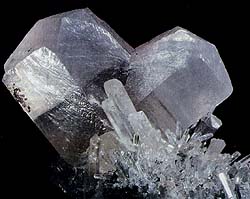 Diagnostic card.
Diagnostic card.
Ca-CO 3
The trigonial trigonometric system
Hardness 3
Specific weight 2.71
Cleavage is perfect
Cracked shell
Color is colorless, differently colored
Color in powder white
Glitter from glass to pearl

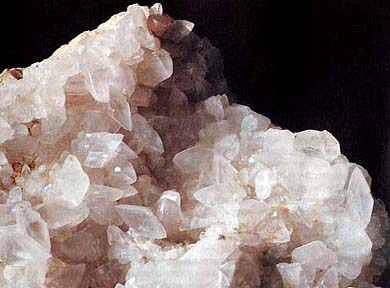 Calcite - one of the most common minerals - is represented by a variety of crystalline forms. In nature, calcite occurs in various forms: its crystals can have the appearance of prisms, rhombohedrons, skalenohedra, tablets. In addition, various aggregates are often formed (granular, parallel, columnar, lamellar); Veins of fibrous structure; Constrictions of zonal addition. The color of calcite is very diverse - white, reddish, yellow, brown or green.
Calcite - one of the most common minerals - is represented by a variety of crystalline forms. In nature, calcite occurs in various forms: its crystals can have the appearance of prisms, rhombohedrons, skalenohedra, tablets. In addition, various aggregates are often formed (granular, parallel, columnar, lamellar); Veins of fibrous structure; Constrictions of zonal addition. The color of calcite is very diverse - white, reddish, yellow, brown or green.
Calcite in nature often forms dense microcrystalline masses - limestones, which under the influence of metamorphism are transformed into rocks with a sugar-like structure (marbles). Rigid forms of cave formations have a fibrous structure. They are deposited from waters rich in calcium carbonate; Typical karst formations (stalactites, stalagmites, curtains, etc.) are obtained, as well as oolites, pizolites and typical travertines.
Diagnostic signs.
Many crystals fluoresce in the ultraviolet rays in red, yellow, pink or blue. Thermoluminescence is often observed. It is soluble in hydrochloric acid. Scrabble with a knife. From the point of view of optics, calcite detects the property of birefringence. A beam of light, passing through a crystal, splits into two rays that advance inside the crystalline body at different speeds. This creates a double image phenomenon.
Origin.
Calcite is a typical mineral of sedimentary genesis. It is formed as a result of chemical precipitation (by evaporation of solutions enriched with calcium carbonate) or the accumulation in the sediment of inorganic remains of marine organisms that use calcium carbonate dissolved in water to form its shells (organogenic limestones). Calcite can also have metamorphic origin and, very rarely, magmatic. Limestone rocks are very common on the surface of our planet, accounting for 40% of its area, while their weight fraction in the crust is only 4%.
Place of Birth.
Large, clear and transparent calcite crystals are found in the voids of Icelandic basalts (Iceland spar). Crystals of pink or light green color are mined in Cumberland (England). Other famous deposits are Joplin (Missouri, USA) and Freiberg (Germany). Very interesting druses crystals from Fontainebleau (France) and Michigan (USA), including dendrites of copper.
Application.
Dense massive forms of calcite (limestones and marbles) are used in construction as cement raw materials, building stone and finishing material. In the chemical industry, they are used for the production of caustic soda, carbon anhydrite, calcium chloride. In metallurgy they are used as a flux. Shredded earthy calcite masses are used as grinding powders, as well as in the production of rubber and varnishes. Species. Based on the presence of such components as manganese, ferrous iron, zinc, barium, lead and strontium (they partially replace calcium), a number of varieties of calcite can be distinguished: manganocalcite, ferrocalcite, zincocalcite, cobaltocalcite, etc.


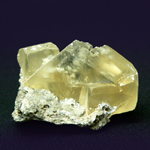
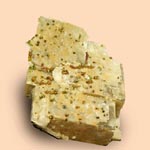

The Kotui River (Middle Siberia, RF, CIS) is a reserve of stone sphinxes and a natural mineralogical museum. The first threshold Sonata. Fossil corals of different forms and species. Fossil mineralogy paradise. Photo , 2014
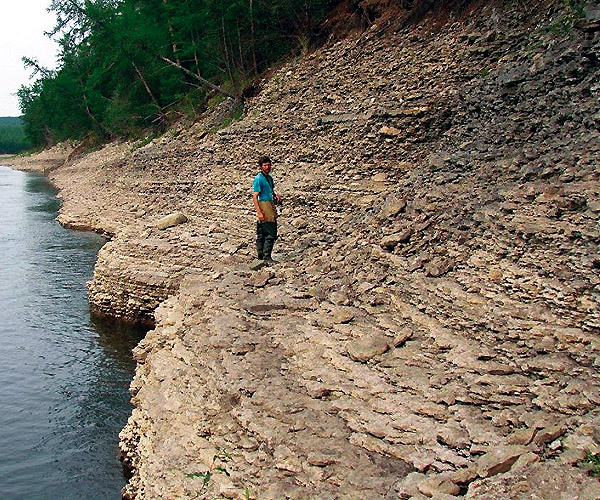
Cliffs, entirely consisting of single and colonial corals of different types and sizes.
It looks like a horizontal basalt slate, in fact it is an ancient coral
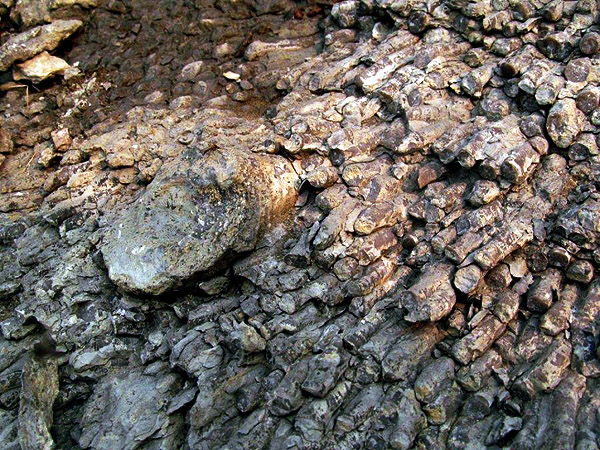
Coral breakage - elements of an ancient coral reef and fragments of corals.
It looks like stone basalt separations and the result of activity of volcanoes
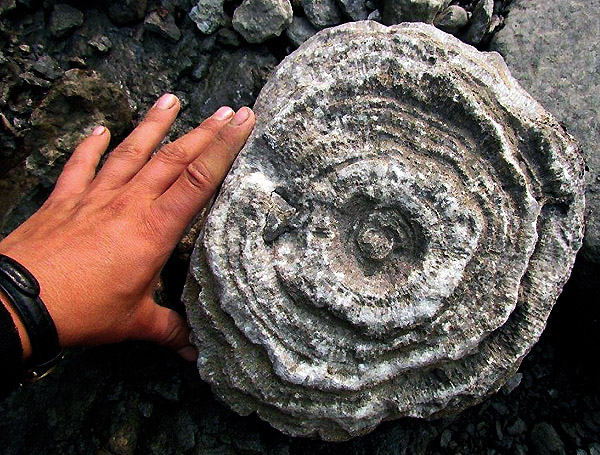
One of the largest fossil corals. We called such corals "ears" - structure.
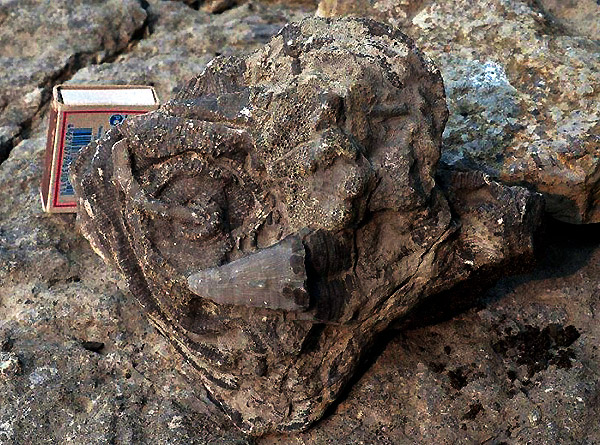
Different types of colonial and solitary corals in one fossil sample. Sponges.
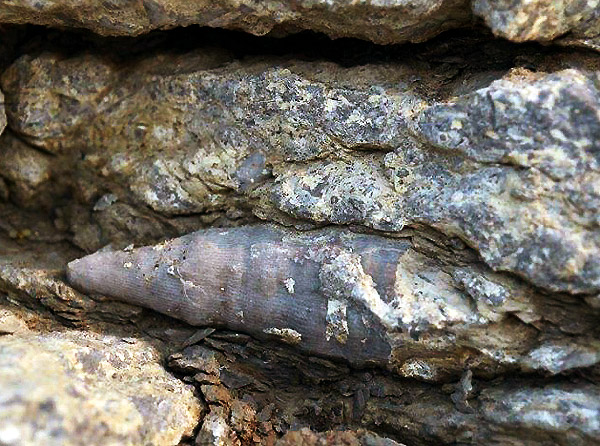
A single fossil coral in the coastal cliff of Kotuya. Kremni. Opal. Cracks in the precipice.
Perhaps, one of the most diverse in the world of minerals is natural calcium carbonate CaCO3 - calcite. Moreover, there is no other mineral that, like calcite, in the form of rocks - limestone, chalk and marble - would make many kilometers of layers on thousands of kilometers of continents, whole mountain systems. Of the same substance, coral polyps have created one of the most grandiose structures on Earth - the Great Barrier Reef, stretching for 2000 km along the coast of Australia.
Calcite is a quaint and mysterious world of caves, white-stone glow of the ancient cities of the world and Egyptian pyramids, marble columns of ancient temples and multi-colored facing of metro stations, which are not subject to the millennia. But even more diverse, colorful crystals of calcite look. They are like thin needles, then on flattened parallelepipeds, then on fragile sheets of paper (such calcite is called paper spar-papyrspatite).
Large transparent crystals of calcite, in the place of one of the first findings of this species, are called Iceland spar. In the rhombohedra of Iceland spar, one can see an interesting optical phenomenon - everything that is seen through them seems bifurcated. So one of the amazing properties of some transparent crystals manifests itself - double refraction. Become a jewel stone calcite does not allow its low hardness (3 on the Mohs scale - the mineral is one of the standards of hardness of this scale) and cleavage - the ability to easily crack when striking symmetrical polyhedra - rhombohedra. But on the other hand, it is the low hardness that makes the fine-grained calcite rock - marble - the favorite material of sculptors and architects.
Another very remarkable property of calcite is its reaction with acids. It is enough to apply even a drop of a weak acid on the calcite, as it begins to hiss, bubble. So it can easily be distinguished from similar minerals. A similarity of calcite with other minerals is due to the variety of its forms and colors. Calcite can be honey-yellow, purple, green, tender pink, orange, brown, blue, raspberry. In a long series of impurities giving calcite a variety of colors, iron, manganese, cobalt, nickel, rare earth elements are most common. There are also a number of minerals, the smallest inclusions of which stain calcite. So, blood-red becomes calcite containing fine-grained cinnabar, green, blue, blue color give calcite impurities of copper carbonates. There is black calcite - anthraconite, colored with inclusions of bitumen.
Calcite is an omnipresent mineral. It seems that there are no such processes on Earth in which it does not form. There are even igneous rocks - carbonatites, where calcite together with other minerals crystallizes from milligrade melts. The most diverse in form and color, calcites arise from hot underground solutions - fluids. Some kind of this process can be observed in the kettle: the scaling appearing here is the same calcite. At a much lower temperature, from the same calcium carbonate, their constructions, shells and skeletons create innumerable living creatures - mollusks, corals, sea urchins and stars. From the cold underground waters there are colonnades of stalactites and stalagmites, the whole gloomy world of caves.
Remarkable samples of this mineral are found in many places of the Earth. Iceland spar crystals from Siberia, multicolored calcites from Mexico, "stone flowers" from the caves of Central Asia and a kaleidoscope of all kinds of crystalline forms from the ore deposits of Primorye are just a small fraction of the most beautiful calcite samples falling into the hands of stone lovers.
Calcite, or calcareous spar, is the third most common mineral in the earth's crust after quartz and feldspar. Calcium carbonate. Glitter is glass. It is transparent, but often opaque. Colors: white, gray, yellow, reddish, brownish, green; It is colorless. The line is white, the heavily contaminated differences can also be colored. Fracture is conchoidal (more often, stepwise cleavage along cleavage planes). Cleavage is very perfect.
If you drop on the calcite with cold dilute hydrochloric acid, bubbles of carbon dioxide are intensively emitted (calcite "hisses"). Calcite is composed of limestones, also found in sandstones and marls. As a cement or an integral part is present in many metamorphic rocks, in hydrothermal ore veins; In voids occurs in the form of drusen and adherent formations (for example, forms stalactites in caves).
Crystals (trigonal syngony) are very common. In their faceting are often dominated by the edges of sharp rhombohedra, as well as skalenodra and prism. Crystals are rich in combinations of various simple forms. There are often twins. Large crystals are formed in cracks and drusen cavities. In addition, fine-grained masses of calcite, aggregates of columnar precipitates or large-grained block calcite, which cleaves in cleavage like feldspars, are very common in nature. It occurs everywhere.
Iceland spar is a colorless water-transparent type of calcite with a pronounced birefringence of light. Technical applications are found in optical instruments. The richest known deposits in the eastern part of Iceland have already been exhausted; In the CIS it occurs in the trap of the Siberian platform. Calcium carbonates are represented by varieties of calcite mineral and its polymorphic modification - aragonite.
- Ghetchellit - "New Almaden blend" - arsenide and antimony sulfide (modern sulfosol)
- Antimony is a toxic metal (semimetal) , widely used in metallurgy, medicine and engineering
- Zirconium - a rare and undiscovered metal and the most dangerous precious stone in oxide and salt
- Gold - yellow dangerous and poisonous metal of modern accurate digital and cable technologies
- Sulfur is a golden-yellow toxic substance and a sign of active volcanic activity
- Cadmium is an undisputed toxic silvery metal unknown to a wide range of people
- Lead - a poisonous gray imitator of metallic silver and toxic metal blende
- Arsenic is a classic poison of medieval and modern poisoners and medicine in medicine
Poisonous and radioactive dangerous stones and minerals
** - poisonous stones and minerals (mandatory check in the chemical laboratory + explicit indication of toxicity)
** - radioactive stones and minerals (mandatory check on the standard dosimeter + ban on open sales in case of radioactivity exceeding 24 milli / g / h + additional measures of population protection)
Catalog of minerals and semi-precious stones of the world by groups
** - poisonous stones and minerals
** - radioactive stones and minerals


Comments
Commenting on, remember that the content and tone of your message can hurt the feelings of real people, show respect and tolerance to your interlocutors even if you do not share their opinion, your behavior in the conditions of freedom of expression and anonymity provided by the Internet, changes Not only virtual, but also the real world. All comments are hidden from the index, spam is controlled.